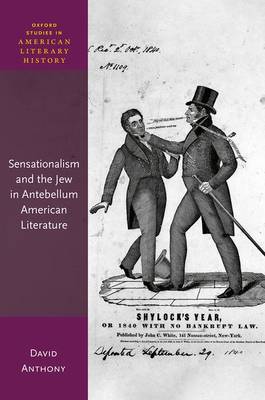
- Afhalen na 1 uur in een winkel met voorraad
- Gratis thuislevering in België vanaf € 30
- Ruim aanbod met 7 miljoen producten
- Afhalen na 1 uur in een winkel met voorraad
- Gratis thuislevering in België vanaf € 30
- Ruim aanbod met 7 miljoen producten
Zoeken
Omschrijving
This book examines the charged but mostly overlooked presence of the sensational Jew in antebellum literature. This stereotyped character appears primarily in the pulpy sensation fiction of popular writers like George Lippard, Ned Buntline, Emerson Bennett, and others. But this figure also plays an important role in the sometimes sensational work of canonical writers such as Nathaniel Hawthorne, Edgar Allan Poe, and Walt Whitman. Whatever the medium, this character, always overdetermined, does consistent cultural work. This book contends that, as the figure who embodies money and capitalism in the antebellum imagination, the sensational Jew is the character who most fully represents a felt anxiety about the increasingly unstable nature of a range of social categories in the antebellum US, and the sense of loss and self-hatred so often lurking in the background of modern Gentile identity. Each chapter examines a different form of sensationalism (urban gothic; sentimental city mysteries; anti-Tom plantation narratives; etc.), and a different set of anxieties (threats to class status; collapsing regional identity; the uncertain status of Whiteness and other racial categories; etc.). Throughout, the sensational Jew acts both as a figure of proteophobia (fear of disorder and ambivalence), and as the figure who embodies in uncanny form a more fulfilling and socially coherent form of identity that predates the modern liberal selfhood of the post-Enlightenment world. The sensational Jew is therefore a revealing figure in antebellum culture, as well as an important antecedent to contemporary antisemitism in the US.
Specificaties
Betrokkenen
- Auteur(s):
- Uitgeverij:
Inhoud
- Aantal bladzijden:
- 210
- Taal:
- Engels
- Reeks:
Eigenschappen
- Productcode (EAN):
- 9780192871732
- Verschijningsdatum:
- 4/10/2023
- Uitvoering:
- Hardcover
- Formaat:
- Genaaid
- Afmetingen:
- 163 mm x 229 mm
- Gewicht:
- 476 g

Alleen bij Standaard Boekhandel
+ 290 punten op je klantenkaart van Standaard Boekhandel
Beoordelingen
We publiceren alleen reviews die voldoen aan de voorwaarden voor reviews. Bekijk onze voorwaarden voor reviews.








